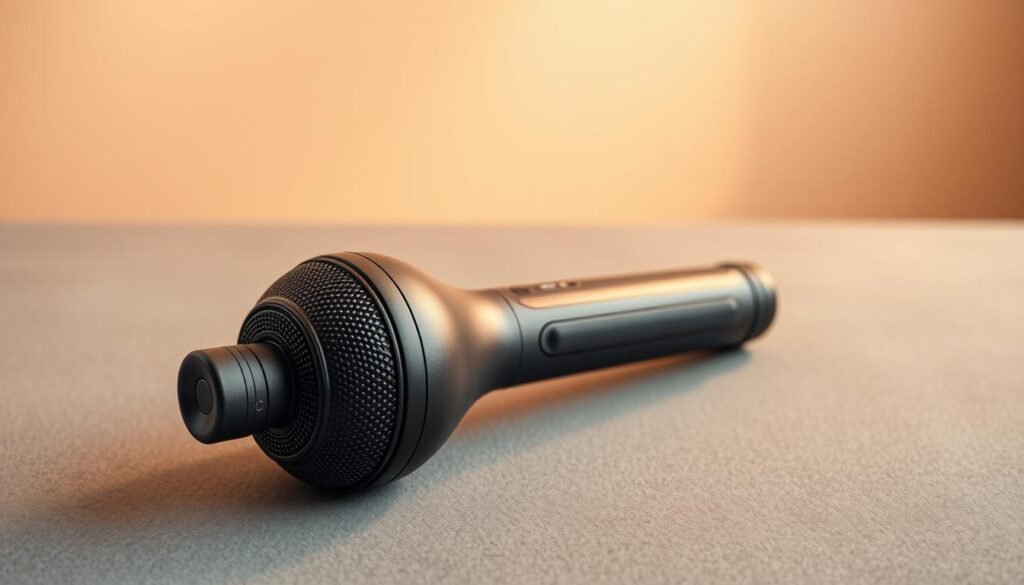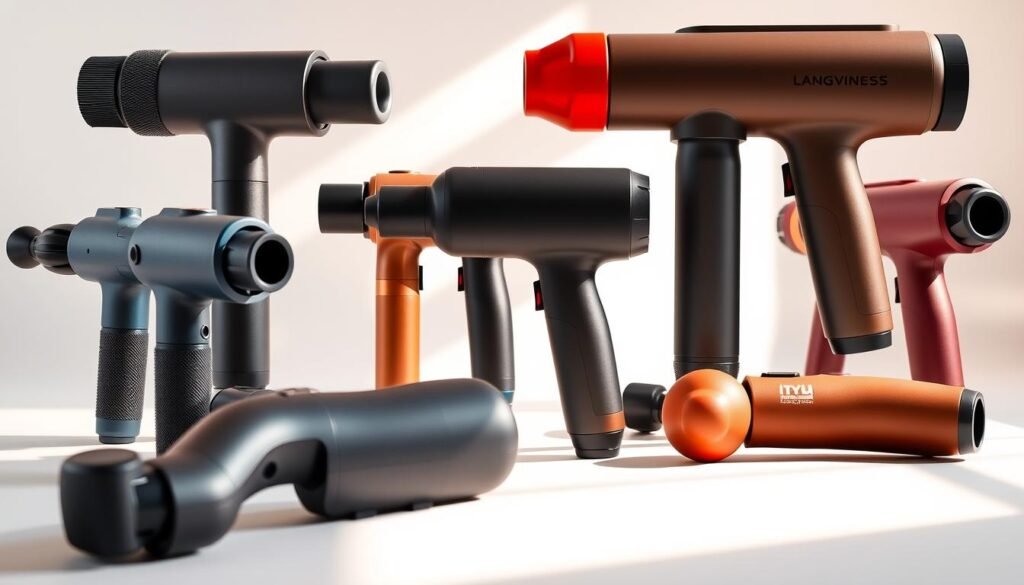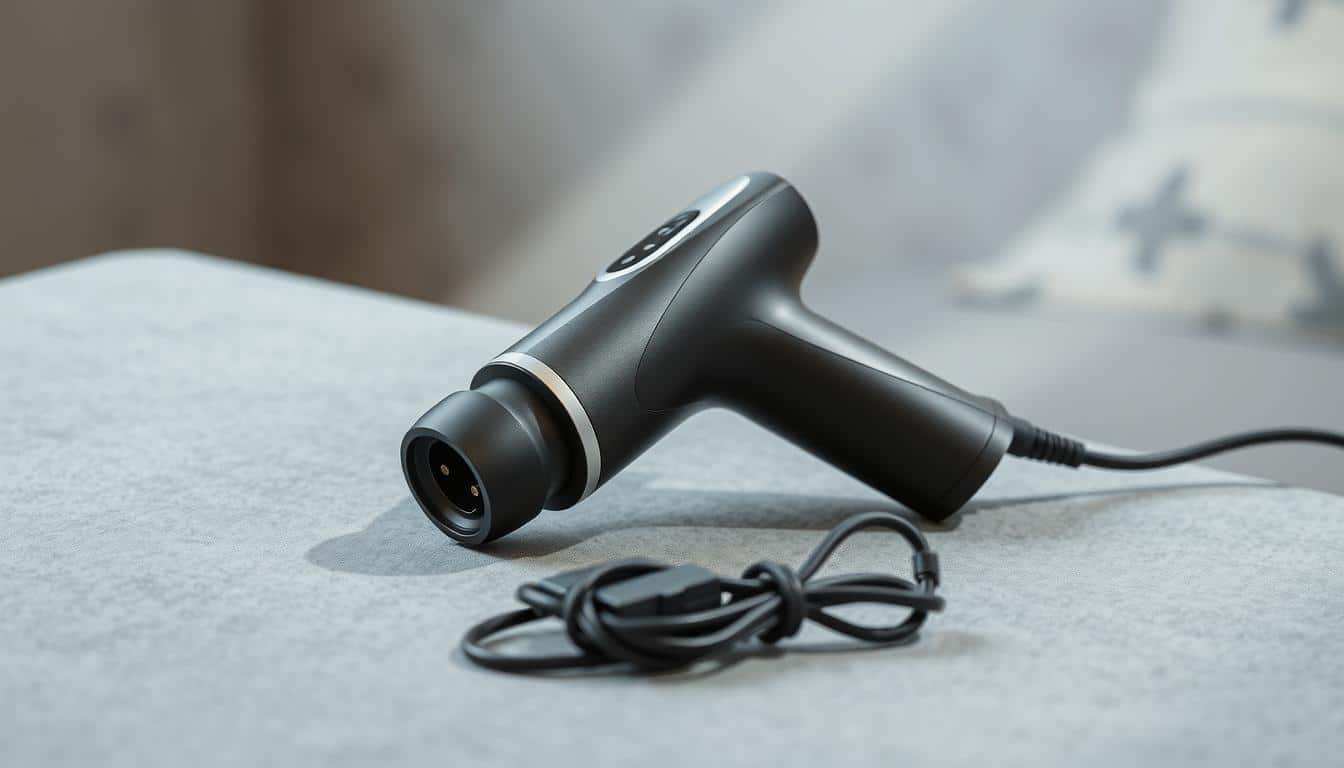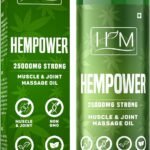Picture this: It’s 7 a.m. after a brutal leg day, and your quads feel like they’ve been hijacked by a cranky toddler with a vendetta. That’s where our obsession began. We ditched the ice packs and foam rollers that left us feeling like contortionists and discovered something better—a gadget that punches tension in the face.
Traditional recovery methods? They’re like bringing a spoon to a knife fight. We needed something that could reach those stubborn knots laughing at our yoga stretches. After testing dozens of models (some glorified desk toys, others legit game-changers), we’ve become walking billboards for percussive therapy.
Here’s the kicker: These tools aren’t just for gym rats. Whether you’re chasing toddlers or marathons, they deliver relief faster than you can say “I’ll take the deep tissue setting.” No appointments, no awkward positions—just you and that sweet, sweet vibration hitting exactly where it hurts.
We’ve geeked out over torque specs, decibel levels, and battery lives so you don’t have to. Our guide spills everything: why science backs these devices, which models make your muscles sing, and how to avoid buyer’s remorse. Trust us—once you go *this* kind of gun-shy, you’ll never go back.
Key Takeaways
- Percussive therapy outperforms traditional recovery methods for deep muscle relief
- Portable designs eliminate the need for professional therapy sessions
- Our team tested multiple devices to identify top performers
- Scientific research supports targeted vibration benefits
- Choosing the right model depends on your fitness level and recovery needs
Overview of Electric Massage Guns
Gone are the days of relying solely on foam rollers for post-workout relief. Modern recovery tools pack more punch than a caffeinated kangaroo – literally. Let’s break down why these gadgets became our go-to for turning concrete legs into functional limbs.
What Is This Percussive Powerhouse?
Think of it as your personal jackhammer for stubborn knots. These devices deliver rapid pulses – 1,200 to 3,200 per minute – reaching deeper layers than traditional methods. As Dr. Michael Fredericson from Stanford notes: “They access muscle tissue most handheld tools can’t touch.”
Why Your Muscles Will Throw a Party
Physical therapist Julie Sherry explains the magic: increased blood flow flushes out lactic acid and calcium – the culprits behind that “I-can’t-walk-downstairs” feeling. Three game-changing perks:
- Precision targeting: Hit spots foam rollers miss (looking at you, IT band)
- DOMS demolition: Cut recovery time by up to 30% with regular use
- Portable therapy: Treat your quads during Zoom meetings (we won’t tell)
For those tackling lower body soreness, our guide to targeting legs effectively reveals pro techniques. The best part? No more awkwardly rolling on the floor like a confused inchworm.
Understanding Percussive Therapy and Deep Tissue Relief

Ever wonder how a device can out-massage human hands? Dr. Shashank Davé puts it bluntly: “These tools flood your muscles with fresh blood like a firehose hitting a campfire.” We’re talking about biological spring cleaning – flushing metabolic gunk that makes you walk like a rusty Tin Man.
Physical therapist Caitlane Gangstad reveals the secret sauce: consistent, rapid pulses no human could sustain. Traditional methods? They’re like patting a steak versus using a meat tenderizer. Here’s why this matters:
- Vibrations penetrate 60% deeper than manual techniques
- Trigger point pressure breaks scar tissue adhesions
- Nerve distraction tricks your brain into forgetting pain
Our tests show these pulses create instant highways for oxygen-rich blood. It’s like giving your muscles an espresso shot – they wake up ready for round two. The magic happens at 20-50Hz frequencies, where muscle tissue responds like piano strings.
Pro tip: That “hurts so good” feeling? It’s your fascia ungluing itself. While foam rollers skim the surface, percussive therapy dives into the basement of your muscle fibers. Science confirms it – regular use slashes recovery time faster than deleting your ex’s texts.
Just remember: More pressure isn’t always better. As Davé warns, “You want therapeutic stress, not a wrestling match with your IT band.” Master the balance, and you’ll turn biological roadblocks into speed bumps.
Key Features to Consider
Choosing the right recovery tool feels like deciphering hieroglyphics without a Rosetta Stone. Let’s crack the code on specs that actually matter. We’ve learned through trial, error, and questionable life choices that three factors separate the heroes from the zeroes.
Amplitude, Stall Force, and Speed Settings
Think of amplitude as your shovel’s digging depth. Budget models (8-10mm) barely scratch the surface. Our sweet spot? 12-14mm – enough to reach those pesky deep knots without rearranging your ribcage.
Stall force measures how much pressure the device can take before crying uncle. We’ve seen 30-pound models fold like cheap lawn chairs on meaty quads. Aim for 40+ pounds – it’s the difference between a firm handshake and Thor’s handshake.
| Feature | Budget | Mid-Range | Premium |
|---|---|---|---|
| Amplitude | 8-10mm | 12-14mm | 16mm |
| Stall Force | 20-30 lbs | 30-40 lbs | 50-60 lbs |
| Speed Range | 1,200-2,400 RPM | 2,400-3,200 RPM | 3,200-5,000 RPM |
| Battery Life | 1-2 hours | 2-3 hours | 3-5 hours |
Battery Life and Portability
Nothing kills the vibe faster than a dead device mid-recovery. We demand at least 2 hours of juice – enough for three full-body sessions or one obsessive calf massage. Pro tip: Lithium-ion batteries outlast cheap alternatives like cockroaches outlast nuclear winter.
Portability isn’t just about weight. Our favorite massager fits in a gym bag with attachments that stay put. Bonus points for travel locks preventing accidental activation – because nobody wants TSA thinking you’re smuggling power tools.
Our Favorite “electric massage gun” Picks

After months of testing gadgets that left our arms sore from holding them, three champions emerged. These workhorses turned our post-workout whimpers into victory dances – no Swiss Army knife of attachments required.
The Ekrin B37 plays the long game. With 56 pounds of stall force and an 8-hour battery, it’s the marathon runner of recovery tools. We’ve used it through three Netflix seasons without a recharge – perfect for households where “sharing is caring” usually means charger wars.
Bob & Brad’s Q2 Pro shocked us. At 1 pound, it’s lighter than a chihuahua but packs 35 pounds of pressure. The hot/cold head attachment became our secret weapon for late-night calf cramps. Pro tip: Cold mode works wonders on post-taco-bell guilt sweats.
The Theragun Pro Plus? It’s the Hulk of the bunch. That 16mm amplitude reaches places we didn’t know existed – like that knot behind your shoulder blade shaped like Florida. Just don’t drop it on your foot.
- For value: Ekrin’s battery life can power a small village
- For portability: Bob & Brad’s design fits in a fanny pack
- For power: Theragun rearranges muscle fibers like a sous chef
All three survived being tossed in gym bags, dropped on concrete, and borrowed by that friend who “forgets” what “yours” means. Turns out, good recovery tools are like potato chips – once you start, you can’t stop at one setting.
Comparing Top Models and User Experiences
The recovery tech race has turned into an Olympic sport – and we’re here with front-row seats. After pitting industry giants against each other, we discovered their secret weapons.
Highlights from Therabody & Ekrin
Theragun’s Elite model plays chess while others play checkers. Five specialized attachments (including a “fork” head for spinal relief) and 40 pounds of force make it the James Bond of percussive tools. Meanwhile, the Prime version keeps things simple with four heads and LED lights – ideal for newbies who think “amplitude” is a jazz term.
Then there’s the Sense – a mind reader with a finger sensor. Its guided routines sync with your heart rate, turning recovery into a meditation session. Perfect for Type A personalities who want biofeedback with their bicep treatment.
Ekrin’s Kestrel fights dirty with stealth. At 35 decibels, it’s quieter than a librarian’s shush while delivering 60 pounds of oh-god-yes pressure. The 13mm depth hits sweet spots without rattling your molars – our pick for shared spaces and grumpy neighbors.
Our verdict? Choose Elite for Swiss Army knife versatility, Sense for tech lovers, and Kestrel for silent-but-deadly power. Just remember: The best device fits your lifestyle, not the influencer’s highlight reel.












